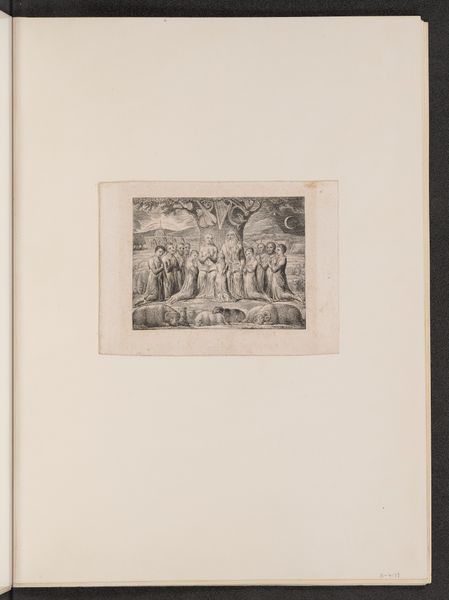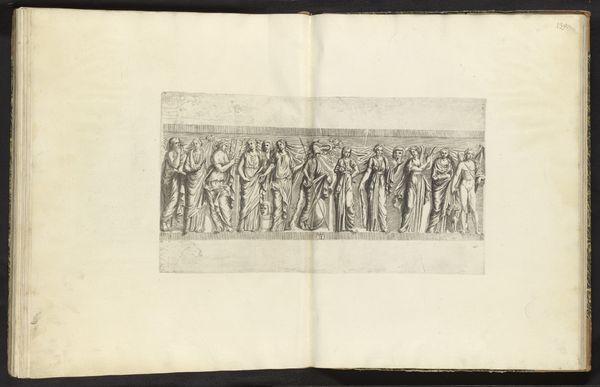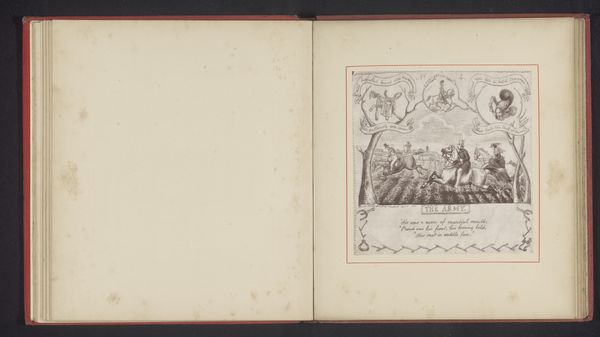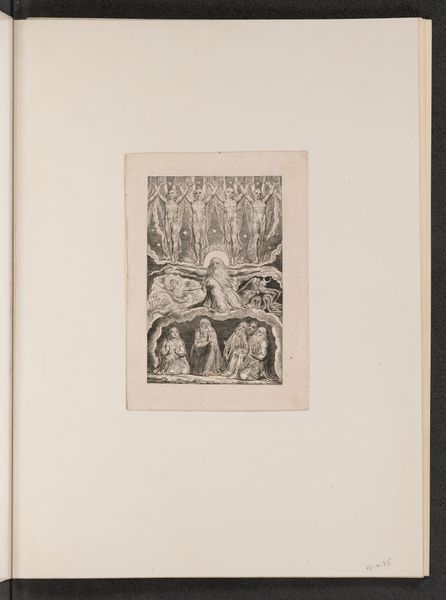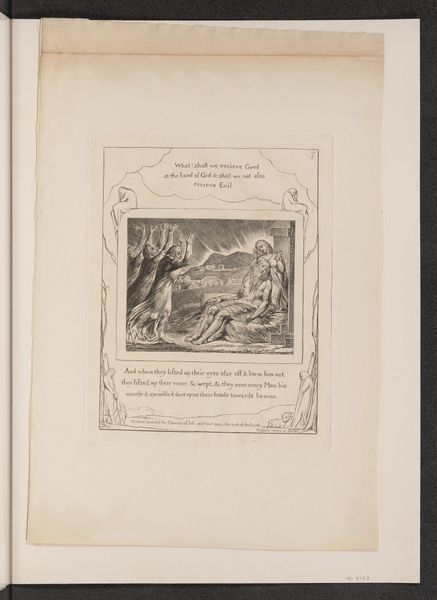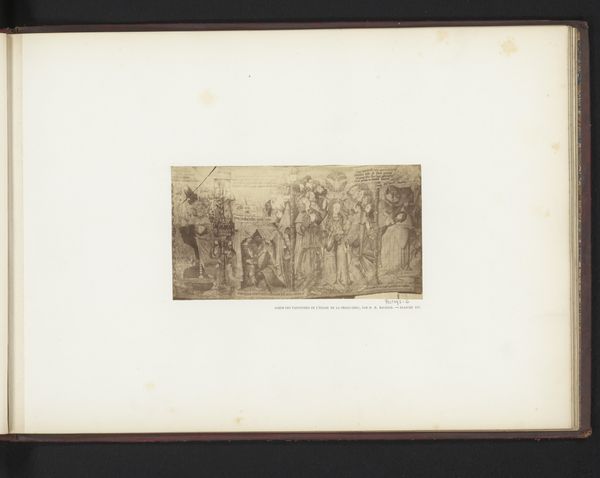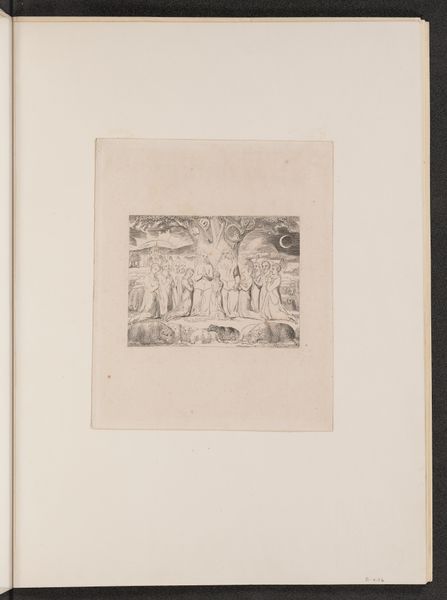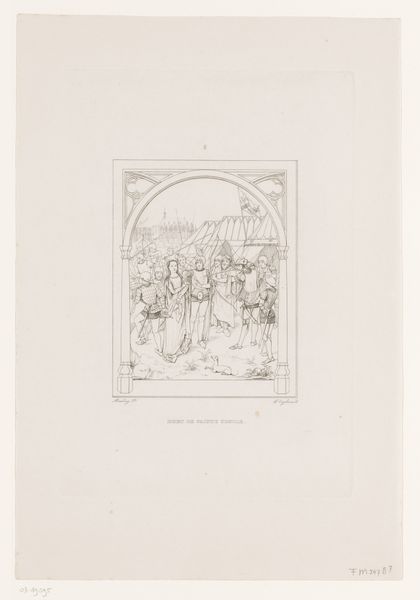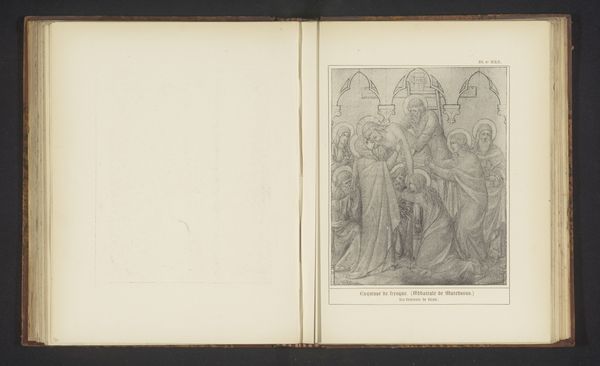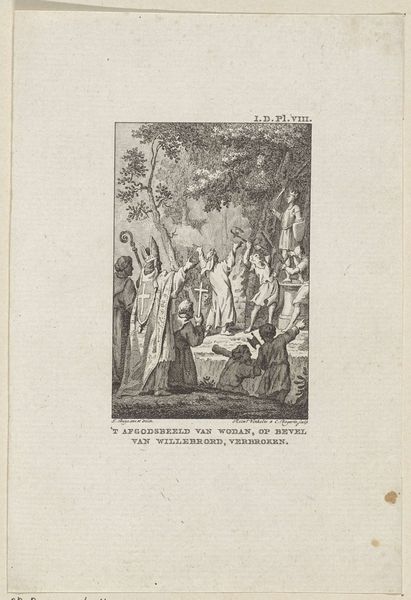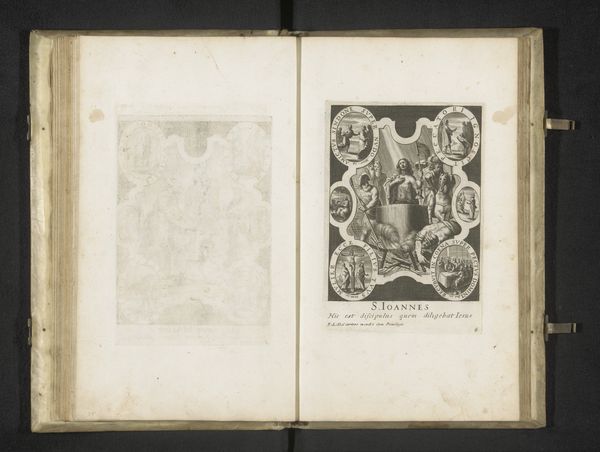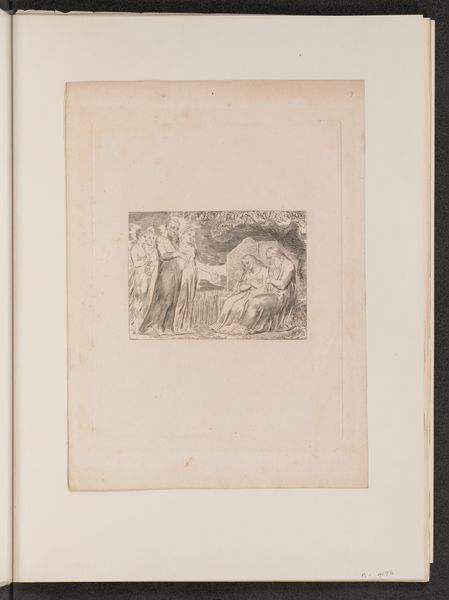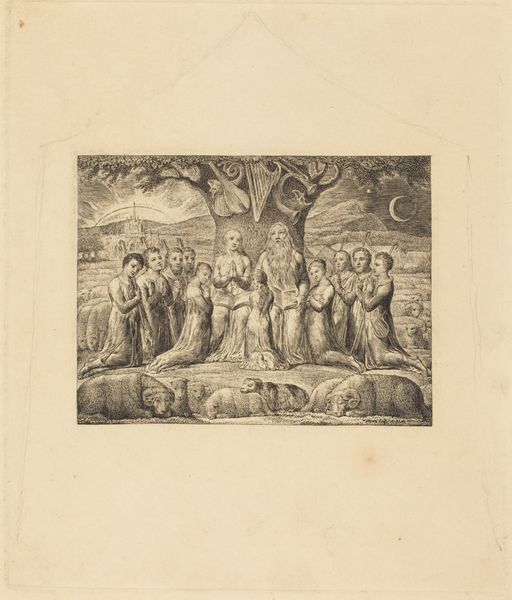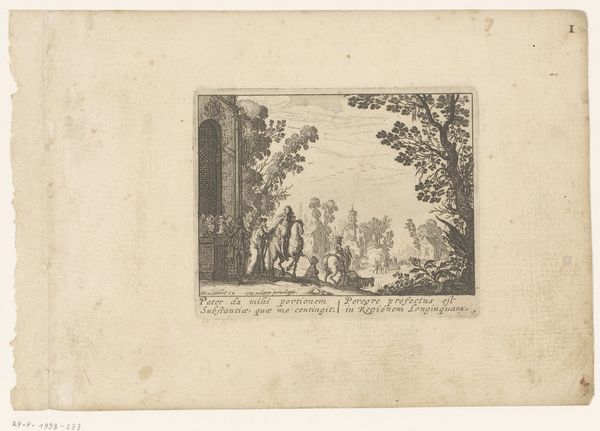
print, engraving
#
narrative-art
# print
#
figuration
#
romanticism
#
line
#
engraving
Dimensions: plate: 19.9 × 16.5 cm (7 13/16 × 6 1/2 in.) sheet: 29.6 × 21.8 cm (11 5/8 × 8 9/16 in.)
Copyright: National Gallery of Art: CC0 1.0
Editor: We are looking at William Blake’s engraving, "Job and His Family," created in 1825. The linear details create such a dramatic effect! I'm intrigued by how the composition is organized with these textual elements around the image. How do you approach interpreting this piece from a formal perspective? Curator: The composition’s formal elements present a fascinating case study in Blake's artistic philosophy. Observe how he tightly integrates text and image, not as separate entities, but as mutually reinforcing components. The linear quality you mentioned defines every form, delineating figures and landscape with equal intensity, denying a hierarchy of subject matter. Editor: Right, I see how the lines are almost vibrating with energy, making it very dynamic, especially within that architectural frame. Curator: Precisely. This dynamic line underscores a vital principle for Blake: energy and vitality are synonymous with the divine. The balanced symmetry might suggest order and harmony but consider if the expressions and gestures offer a counterpoint. Does the emotional weight disrupt the sense of calm the symmetry tries to achieve? Editor: It does somewhat! Their faces all seem so intense. It creates an interesting tension between order and feeling. I hadn't really noticed that before. I guess looking closely at the formal choices really opens up how you understand the emotional narrative. Curator: Indeed. Formal elements aren’t just about describing the artwork. It reveals meaning, artistic intent and its very soul, don't you agree? Editor: Definitely! Thinking about the line, composition, and symmetry, completely changed how I viewed this engraving. Thanks for showing me the soul within.
Comments
No comments
Be the first to comment and join the conversation on the ultimate creative platform.
